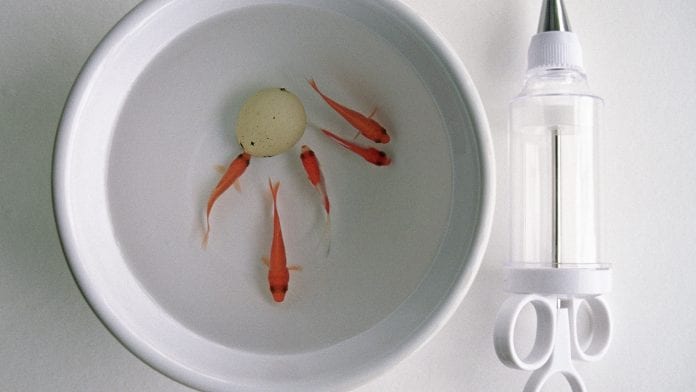
With significant funding from NIH, a researcher at The University of Texas at Arlington is investigating fundamental biological processes that lead to fertility problems in humans.
Sen Xu, assistant professor of biology at UTA, received a five-year, $1.89 million grant from the National Institutes of Health (NIH) to use cutting-edge genomic approaches to understand human fertility problems and the genetic mechanisms of parthenogenesis, a form of asexual reproduction.
Analysing human fertility problems
Human reproduction starts with the production of a healthy sperm and egg, which occurs through a cell division process called meiosis—a major focus of Xu’s study of parthenogenesis.
“Genetically speaking, all humans are 50% of our dad and 50% of our mom,” Xu explained. “That’s because meiosis packs only half of our DNA into a sperm or egg. Due to the importance of healthy sperm and egg to produce a viable embryo, any disruption of normal meiosis can create huge problems for human reproductive health.”
Xu’s study zeroes in on the one in every 1,000 animal species that are capable of reproducing without mating via parthenogenesis.
“Some parthenogenetic female animals reproduce asexually by modifying their otherwise normal meiosis to put 100% of their DNA in their egg, so it does not need fertilisation to develop into a healthy baby,” Xu said. “Understanding the genetic mechanisms leading to this kind of aberrant meiosis can contribute to our understanding of the process and have implications for treating infertility in humans.”
Why water fleas?
The focal species of this project is a freshwater microcrustacean known as Daphnia, commonly known as water fleas. The tiny relative of shrimp and lobsters was selected because most Daphnia are capable of both sexual and asexual reproduction, while some are capable only of parthenogenesis, Xu said.
The Daphnia that switch between the two forms of reproduction do so based on the environmental conditions around them.
Using high-throughput genome sequencing and CRISPR-Cas9 gene editing, Xu will draw out specific genes to examine their function in Daphnia reproduction. His goal is to understand the mechanisms and genes that make these animals sense the environment and switch between normal and aberrant meiosis.
He also hopes to identify the mechanisms that make some populations of Daphnia abandon sexual reproduction entirely in favour of parthenogenesis.
Unlocking major insight into human fertility
“Humans share a lot of the same genes with other animals that play a similar role in the basic cell division process,” Xu said. “By learning what these genes do in a model system like Daphnia, the findings could inform us about what would happen if a similar aberrant meiosis process happened to the same gene in humans.”
Xu’s work builds on UTA’s expertise as a regional hub for genomics research through the North Texas Genome Center.
“Exploring the human and non-human genome is critical for improving how we administer health care and interact with the world around us,” said Clay Clark, UTA’s chair of biology.
“Sen’s work has the potential to unlock major insight into human infertility at the foundational level. I am grateful the NIH recognises the importance of this research in such a significant way.”









